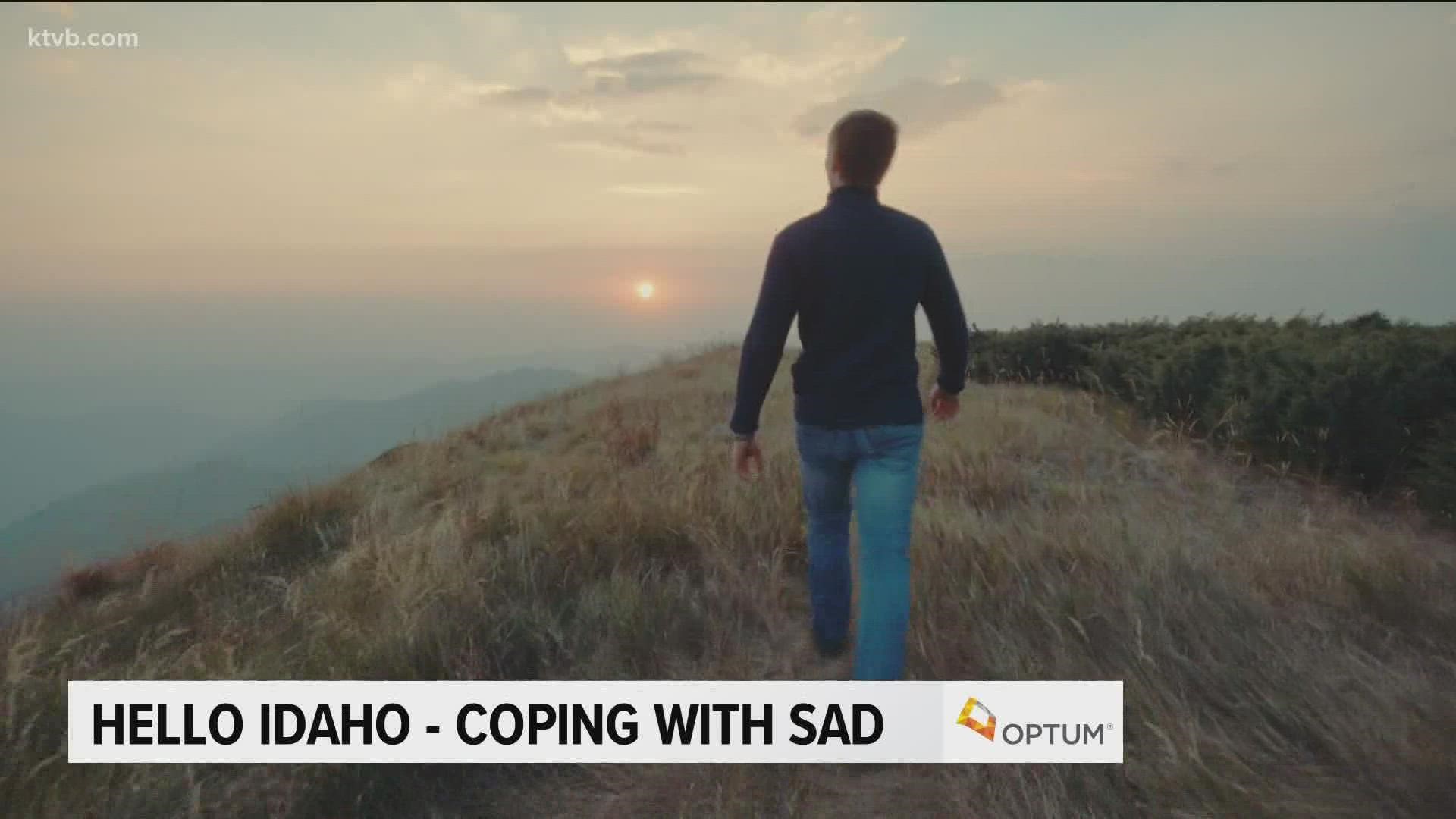BOISE, Idaho — With the daylight hours getting shorter and shorter the deeper we get into fall and winter, you may be feeling a little down. Is it just a case of holiday and winter blues, or are you dealing with Seasonal Affective Disorder?
"The amount of light we get changes in the fall," Optum Idaho Deputy Director Casey Moyer said. "There's less time when the sun is in the sky and that can have an impact on our body's natural ability to manage itself."
Moyer says that can lead to Seasonal Affective Disorder (SAD), which is a type of depression.
"The symptoms start out mild at the beginning of the season and get progressively more established at the end of the season," Moyer said.
The common symptoms of fall and winter SAD include oversleeping, appetite changes, especially a craving for foods high in carbohydrates, weight gain, and tiredness or low energy.
The signs of depression vary from person to person, Moyer said.
"For example, irritability is sometimes one of those signs of depression people don't often associate," he said.
Moyer says in order for someone to be diagnosed with fall and winter SAD their symptoms have to appear two or three years in a row.
"That's the difference between having sort of some holiday blues one year versus it being a pattern," Moyer said.
Getting as much daylight as possible can help. If you work an indoor job during the bulk of the daylight hours, Moyer suggests scheduling time on your calendar for a 10-minute walk outside in the fresh air.
"It's going to help with your biological clock's awareness of what time of year we're at as well as some of the other hormones, such as serotonin and melatonin, which are things that help regulate our mood and our sleep patterns," Moyer said.
Also, stay active, eat healthy foods and stay away from junk food, and spend time with your family and friends.
"Branching out, being social and avoiding some of that social isolation that feels very comfortable when you are experiencing that depression," Moyer said.
On the severe side, Moyer says symptoms of SAD can include feelings of hopelessness or despair, or even thoughts of suicide. If that's the case for you or someone you know, or if you just can't seem to pull out of your sadness, Moyer encourages you to reach out to a professional for help.
Watch more 'Hello Idaho':
Watch our latest conversations about mental health in our YouTube playlist:

